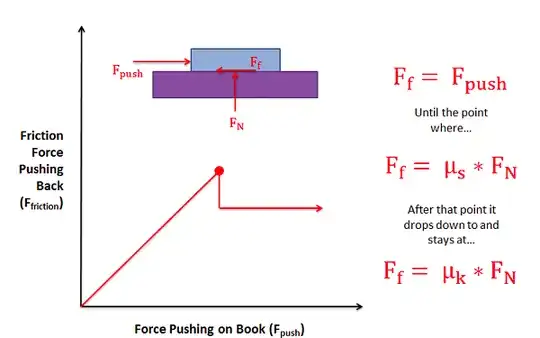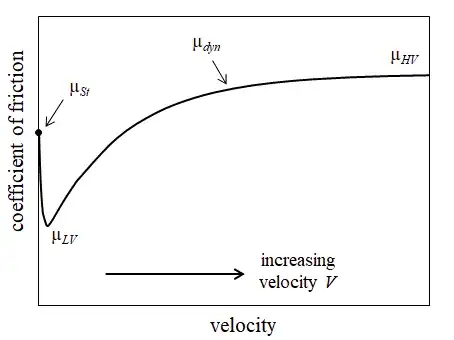Your questions, and the answers you have recently received along with the links referenced therein, illustrates that there appears to be no universally acceptable explanation of what causes “friction”, or even if we can ascribe a single term to explain certain observable phenomena. But I think we may be able to agree on some answers to your questions, which I will address after I first present the following for deliberation.
We observe certain phenomena associated with the relative motion between two surfaces. First we observe it appears to require a certain minimum amount of force to initiate relative motion, that is, to initiate "sliding". Second we observe that once relative motion is underway, there appears to be a force that acts in opposition to that relative motion, or sliding. We use the term "static friction" to describe the first observation and "kinetic (or dynamic, or sliding) friction" to describe the second observation. We assign certain "friction coefficients" to each term based on testing different combinations of materials along with the conditions associated with the surfaces (roughness, presence of lubricants, etc. ).
Based on tests and resulting calculated “friction coefficients” we attempt to develop a model for what friction is that can predict the observed phenomena. Probably the most common, albeit simplistic one, is the so called “Standard Model” of friction. One description of this model and the assumptions upon which it is based can be found here: http://hyperphysics.phy-astr.gsu.edu/hbase/frict.html.
While this model does a reasonable job in many situations, it doesn’t take long before we encounter exceptions to it and to the assumptions upon which it is based. For example, while lesser surface roughness is generally associated with lower friction because of the theoretical lesser degree of interlocking between microscopic irregularities at the surface, we find the counter intuitive observation that the coefficient of static friction between very smooth, clean and dry aluminum surfaces is among the highest encountered (re: https://www.engineeringtoolbox.com/friction-coefficients-d_778.html). This forces us to acknowledge the different phenomenon of increased electrostatic attraction between the molecules at the surfaces due to closer contact. It also makes us question whether any single model or combination of models can possibly satisfy all our observations.
That said, let’s see if we can agree on some basic things associated with the terms static and kinetic friction that we can apply to your specific questions (1) through (4).
The first is to agree to define the static friction force as that which resists the initiation of relative motion between contacting surfaces, whilst we agree to define the kinetic friction force as that which acts in opposition to relative motion already underway.
- Does the box ever reach a sufficiently tiny speed that the friction becomes more like static than kinetic friction, even though the box is
actually moving, albeit very slowly?
If we agree the static friction force only exists where there is no relative motion and agree the kinetic friction force only exists where relative motion is underway, then as long as the box is moving friction is kinetic and as long as the box is not moving friction, if any, must be static. There is no in-between.
I emphasize “if any” regarding static friction because if the applied force is reduced to zero, there will be no static or kinetic friction once it stops. If the applied force is not reduced to zero, when the box stops there will be a static friction force equal and opposite to the applied force. Keep in mind that the applied force at that point will always be less than the maximum possible static friction force, based on the friction plot in the Hyperphysics link.
- At what speed does this occur?
Based on the answer to (1), the answer to this and to the title to your post, “A speed limit for static friction?” would appear to be zero for friction to become static.
- What is the transition like? Does the frictional force change from kinetic to static friction linearly as a function of speed?
If we agree the friction must be static or kinetic, without an “in between”, then the transition from kinetic to static would have to be, for want of a better term, abrupt, in the same way that the transition from static to kinetic friction in response to a gradually increasing applied force before sliding begins is abrupt as shown in the friction plot.
The chief difference is the abrupt transition from static to kinetic friction involves a sudden decrease in the friction force, shown as a straight vertical line on the friction plot for the Standard Model, whereas the transition from kinetic to static friction would theoretically not involve a change in the magnitude of the friction force when it changes from kinetic to static. This seems to align with my own real life observations.
If I try to initiate motion of a box on the floor by gradually increasing my pushing force I observe that when the box "breaks free" from the floor and starts to move, the resistance to my pushing force seems to suddenly and significantly decrease. On the other hand, for the box to stop it seems I have to reduce my pushing force to the point where it feels like I am exerting almost no force at all. Certainly much less force than I needed to initiate motion in the first place.
- My intuition suggests that the answer to question (3) is no given sufficient resolution; supposing this is true, is there some interesting substructure to the friction-versus-speed graph that might actually betray some sort of information about the molecular structure (averaged out over the surface area) of the materials?
Based on my response to (3), I would agree with your “no” answer. The “reason” at the molecular level would appear to depend on the specific combination of materials and conditions that prevail at their surfaces. As already acknowledged, there is no simple single answer that can apply.
Hope this helps.

